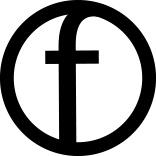Everything about online insurance | The insurance process
The customer wants to lend a risk to the insurance company. The insurer checks whether it wants to take over the risk, then if the insurer wants, it sets a premium based on the average risk.
Temporary coverage
Most insurers can provide so-called provisional coverage. Damage may occur after completing the application form and before it has been accepted. They can provide provisional cover between this period.
Coverage
D the insurance provides cover against risks can be described in two ways.
The causes/events are specifically mentioned in the conditions.
You also have exclusions that are mentioned.
This is the reason that even though they are actually covered events, they are still not insured. Everything is covered unless coverage is excluded.
The insurer provides cover against all external disasters, unless, for example, there is intent. The coverage is broader than event coverage.
Acceptance
An acceptor works for the insurer and assesses on behalf of the insurer and decides whether or not the application will be accepted. The underwriter then checks whether the average risk has been calculated correctly as stated earlier. The application will then be approved until the application is accepted. The policy is then sent to the customer.
Consensus
The insurance contract is concluded when the application is accepted. There is then an agreement of wills. This means that the customer and insurer are bound. A will agreement can also be concluded word of mouth. The rights and obligations of both parties can apply after the will agreement but also before the policy is issued.
Coverage confirmation
Sometimes the policyholder receives a written confirmation of coverage from the insurer in anticipation of the policy.
Policy
After the will agreement and any confirmation of coverage, the insurance policy follows. This is highly automated at many insurers. The policy consists of a policy sheet and policy conditions and sometimes clauses have been added.
Financial settlement
The financial settlement consists of calculating and collecting the premium. The premium is collected either directly by the insurer from the policyholder or by the insurance advisor. The commission for the insurance advisor is also settled. All this is accounted for in a current account that the insurer maintains with the insurance advisor.
Legal liability
In legal liability, a distinction is made between:
Debt liability \ personal liability and
Strict liability \ qualitative liability
If someone causes damage and is held liable for this, there is fault liability, also called personal liability.
A person can also be held liable based on his capacity. This liability without direct fault of the person who is held liable is called strict liability. A more formal name for strict liability is qualitative liability. In the case of fault liability, the injured party must prove that the liable party is guilty of causing the damage, while in the case of strict liability, the burden of proof to the contrary lies with the liable party. It may therefore happen that someone is not to blame for an incident, but is held liable for the damage caused by the incident.
















